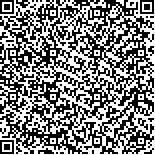| 陶嫦娟,周 凌,张 鹏.基于小动物精准放疗辐照仪(SARRP)的放射性脑损伤模型建立[J].肿瘤学杂志,2021,27(6):459-465. |
| 基于小动物精准放疗辐照仪(SARRP)的放射性脑损伤模型建立 |
| Establishment of Radiation-induced Brain Injury Model Based on Small Animal Radiation Research Platform (SARRP) |
| 投稿时间:2020-12-23 |
| DOI:10.11735/j.issn.1671-170X.2021.06.B009 |
|
 |
| 中文关键词: 放射性脑损伤 动物模型 精准放疗 |
| 英文关键词:radiation-induced brain injury animal model precision radiotherapy |
| 基金项目:浙江省卫生医药卫生科技项目(2020RC044) |
|
| 摘要点击次数: 1230 |
| 全文下载次数: 266 |
| 中文摘要: |
| 摘 要:[目的]拟基于小动物精准放疗辐照仪(small animal radiation research platform,SARRP)建立大鼠的放射性脑损伤模型。[方法] 选取6~8周雄性SD大鼠36只,随机分为0Gy、30Gy和40Gy剂量组,每组12只。基于SARRP,给予大鼠单次全脑照射,良好保护大鼠的食道、口腔和脊髓,观察各剂量组大鼠照射后的一般情况。照射后1个月,采用新物体识别和Morris水迷宫实验检测大鼠的认知功能变化,并解剖大鼠的海马组织,通过HE、DNA缺口末端标记(TUNEL)凋亡检测和Western blot实验检测海马组织的凋亡状态。[结果] 照射后1个月,新物体识别实验显示0Gy、30Gy和40Gy剂量组大鼠的识别系数分别为0.62、0.33和0.23,40Gy剂量组和0Gy剂量组差异显著(P=0.05)。Morris水迷宫实验显示前3天照射组大鼠的潜伏期较0Gy组明显延长,40Gy和0Gy剂量组差异明显(前3天P值分别为0.003、0.036和0.040)。HE染色显示照射组大鼠海马齿状回颗粒细胞层细胞带整体厚度变薄,细胞排列散乱,细胞明显缩小、深染、核固缩,细胞间隙扩大。TUNEL凋亡染色显示照射组大鼠海马齿状回颗粒细胞层凋亡细胞数明显增多。Western blot实验结果显示照射后大鼠的海马区Bax蛋白表达呈现增高趋势,Bcl-2蛋白表达呈现下降趋势,40Gy与0Gy组相比差异有统计学意义(P=0.035、0.048)。[结论]本实验首次基于小动物精准辐照仪成功建立了大鼠的放射性脑损伤模型,40Gy单次全脑放疗可以作为SARRP的建模剂量候选。 |
| 英文摘要: |
| Abstract:[Objective] To establish a rat model of radiation-induced brain injury based on Small Animal Radiation Research Platform(SARRP). [Methods] Thirty-six male SD rats at 6~8 weeks were randomly divided into 0Gy,30Gy,and 40Gy dose groups with 12 rats in each group. Based on SARRP,the whole brain of each rat received single-dose irradiation and esophagus,oral cavity and spinal cord of rats were well protected. The general conditions of rats in each dose group after irradiation was observed. One month after irradiation,the cognitive functions were detected by new object recognition and Morris water maze test,and the hippocampal tissue of rats was dissected. HE staining,TdT-mediated dUTP Nick-End Labeling(TUNEL) staning and Western blot test was applied to detect the apoptosis of hippocampal tissue. [Results] One month after irradiation,new object recognition test showed that the recognition coefficients of 0Gy,30Gy,and 40Gy groups were 0.62,0.33,and 0.23,respectively. There was a significant difference between the 40Gy dose group and the 0Gy dose group(P=0.05). Morris water maze test showed that the escape latency in the first three days of the irradiation group was significantly longer than that of the 0Gy group,and the difference between 40Gy and 0Gy dose group was statistically significant (P values in the first three days were 0.003,0.036 and 0.040,respectively). HE staining showed that the thickness of granulosa cell layer in dentate gyrus of hippocampus in the irradiation group became thinner. The arrangement of cells was scattered and the gap between cells was enlarged. The cells were also obviously reduced,deeply stained,and nuclear pyknosis. TUNEL staning showed apoptotic cells significantly increased in the hippocampal dentate gyrus in the irradiation group. Western blot test showed that the expression of Bax protein in hippocampus increased and Bcl-2 protein decreased after irradiation. The protein expression was significantly different between the 40Gy group and the 0Gy group(P=0.035,0.048). [Conclusions] In this study,the rat model of radiation-induced brain injury was successfully established based on SARRP for the first time. The whole-brain of 40Gy single-dose irradiation can be applied as a dose candidate for SARRP. |
|
在线阅读
查看全文 查看/发表评论 下载PDF阅读器 |